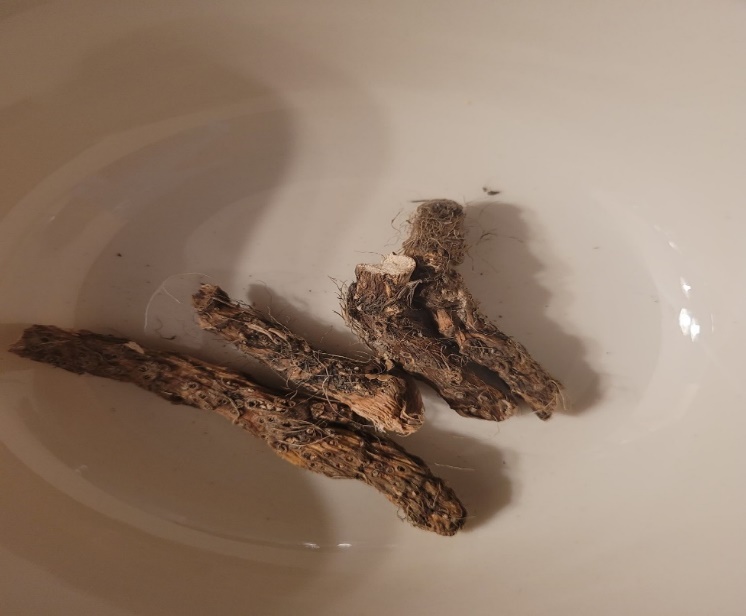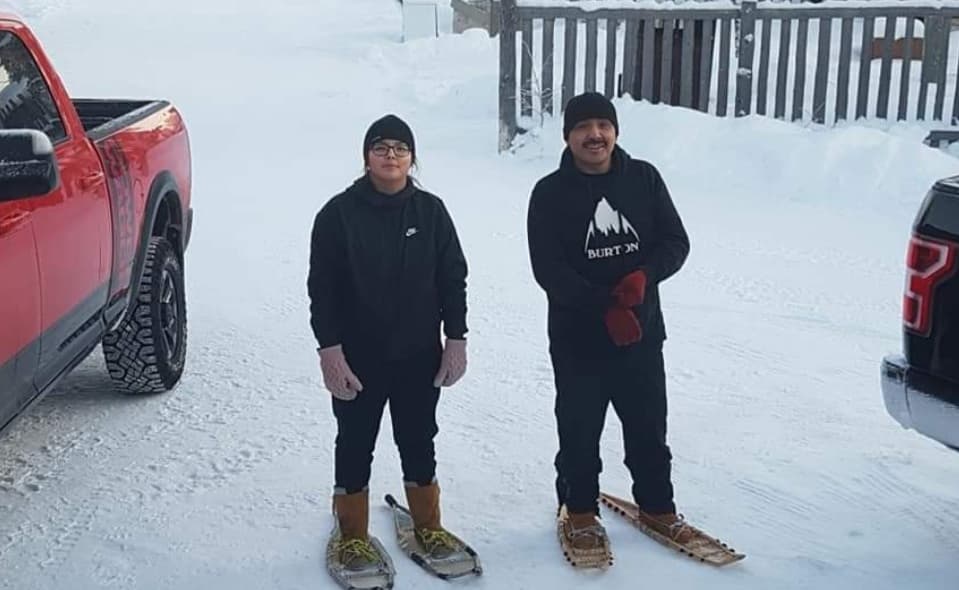Article 8 – My Relationship to the Land
Taryn Cook
As an Indigenous person, my relationship to the land is spiritual, cultural, and traditional. Growing up in an Indigenous community teaches many people how to hunt, fish, cook, and go to ceremonies. I grew up being taught by my parents and grandparents all the survival skills for living on the land, as they had all the skills themselves. I wanted to learn how to be involved with my culture, which is part of my identity. They taught me many survival skills from a young age, so I grew up knowing those skills. The survival skills which they taught me included how to filet fish, make a teepee, make bannock, dry meat, and many more. I learned these skills very well through repetition. As I got older, it got easier to practice the skills without asking for help and further instructions because through practice, they have become second nature. These skills are survival ones because Indigenous people want to live off the land, so we get fish, water, trees, and animals from the land.
I have lived much of my life in an environment full of spiritual, cultural, and traditional events such as drumming, hoop-dancing, hunting, fishing, trapping, and ceremonies. The ceremonies in my community are usually jingle-dress and sweetgrass ceremonies where we sit in a circle and watch the dancers do what they do best. Afterwards, there is a sweetgrass ceremony where the smoke pipe is passed around while we pray. Going to these traditional ceremonies is worthy because it shows me that our community can come together and make progress towards the survival of our spiritual and cultural beliefs.
Our land is a special place where we can be who we are as Indigenous people and learn from others who know what they were taught when they were young. These skills were popular and essential before technology became accessible to Indigenous people who lived off their land. Unfortunately, technology and electronic devices have taken away most children’s ability to learn our spiritual, cultural, and traditional ways because they are glued to their devices all the time. The electronic devices have robbed these children of their need for adventure by turning them to perpetual indoor dwellers. They sleep during the day and play computer games during the night; they would rather talk to people online than communicate with people face-to-face in their community. If the children in our community make the effort to acquire the survival skills that have been passed down through generations, they would be more interested in learning about the land, and they would want to have a relationship with it.
Most parents and grandparents want to continue to motivate their children to learn how to survive on the land, but most children would rather be on social media and play games. Still, some children want to learn land-based survival skills. Parents and grandparents want their children and grandchildren to acquire these skills that are required for their survival in the wilderness, and to keep the tradition alive. It has always been an obligation for parents to show their children how to gain these skills.
The land is so precious. We identify with Mother Earth, and we are grateful for what Mother Earth gives us. The land has given us food to eat, games to hunt, trees to make cabins, and the land will continue to offer us many new resources to discover. We have a spiritual connection; we recognize each piece of our land. Some of our lands have been designated as sacred sites where we talk to our ancestors and educate our children. We protect our land by caring for it and by making sure it is clean of litter and garbage. We also recognize the co-existence of the animal on the land. When Indigenous people hunt, they do not kill more caribou than they need because the animals may go into extinction, or they may soon recognize that the land areas bordering our communities are unsafe. Indigenous people love and care for the land because it is our family, culture, and identity.
Different Indigenous communities have distinct relationships to the land, but it is mostly the same ideologies. The similarities we have as Indigenous people are that we hunt and trap, and we use every part of the animal, leaving nothing to waste. Meat is used for food, while the fur and skin are used to make teepees, clothing, moccasins, snowshoes, and crafts. The only noticeable differences which we as Indigenous peoples have are the different languages which we speak, such as Cree and Dene. However, due to geographical proximity and intertribal marriages, some of us speak more than one Indigenous language, as we connect with friends and family members in other communities.
The health of the land and water is vital in our culture because Indigenous people have a spiritual connection to both entities. The spiritual connection is with Mother Earth because she guides us and gives us the materials we need for our sustenance. She also gives us the responsibility of caring for the land we live off. The spiritual connection we have with the land is love because that is where we get resources including foods and dwellings. Also, our relationship to the land is cultural because of the traditions, values, language, ways of knowing and being, and ceremonies, which are all based on land. Land-based culture permeates all aspects of life, and that is essential to the Indigenous communities. Practicing ceremonies and keeping traditions is an essence of Indigenous identity, health, and wellbeing. When we lose our identity, we feel ashamed because we, as Indigenous people, understand that to be without land is to be without us.

Tradition is another relationship we have with the land because we can do our daily activities like powwows, sweat lodges, hunting, fishing, and more. We have traditional medicine called “Weegis,” and we take that medicine when we are sick with illnesses like pneumonia, high fevers, or when we have a sore throat. When we use Weegis, we take it with tea so we can drink it, and we usually put the Weegis in the tea whole, or we can shred it. We can also chew the Weegis if we don’t want to drink it. Most people do not like the taste of the Weegis, but it does help calm down the fever or sore throat and cure the sickness. We live off the land as Indigenous people, and all Indigenous people are proud to be who they are because we hold a special place in our hearts on where we came from, what we do for a living, and how we take care of our land.
Author’s Bio: Taryn Cook is a First Nations student at University College of the North and is currently in the first year of the Bachelor of Arts Program, going on to the second year in the winter term. After completing the Bachelor of Arts Degree, she will move on to the Education Program. Taryn was born in Brochet, Manitoba and graduated from Cranberry Portage in 2018. She is a mother to one and is determined to show her daughter that she can achieve whatever she wants in life. Taryn enjoys spending time with family, playing sports, being active, and being outdoors to enjoy activities like camping and fishing.

Instructor’s Remarks: Taryn Cook’s “My Relationship with the Land,” tells the readers of her own experience with the land. The way in which she relates her relationship with the land is open and honest: Indigenous people are identified with land. Her concerns about the reluctance of the younger generation to acquire the land-based survival skills call on Indigenous parents to take on the responsibility of passing on their land-based skills to the next generation. This statement by Taryn summarizes the central theme of the essay: “When we lose our identity, we feel ashamed because we, as Indigenous people, understand that to be without land is to be without us.” (Dr. Ying Kong)
